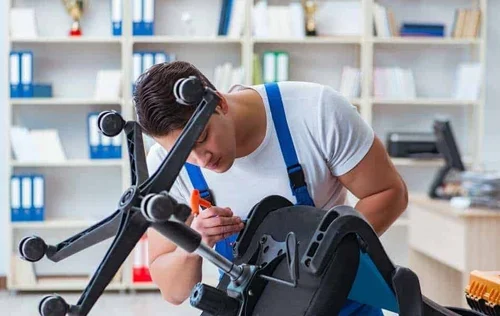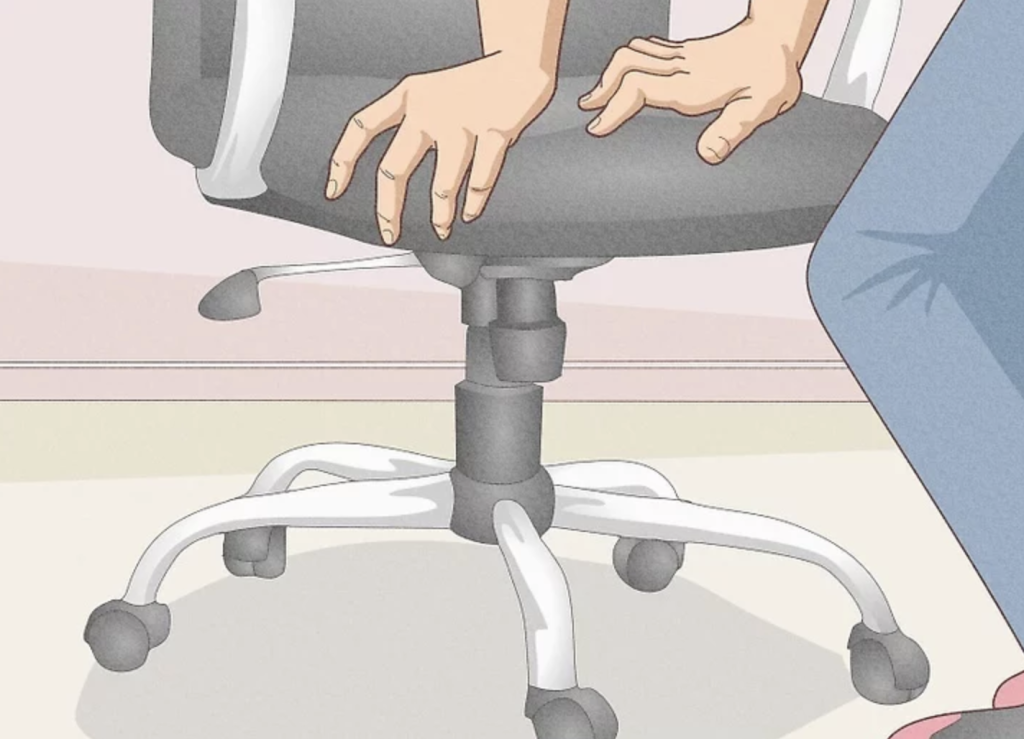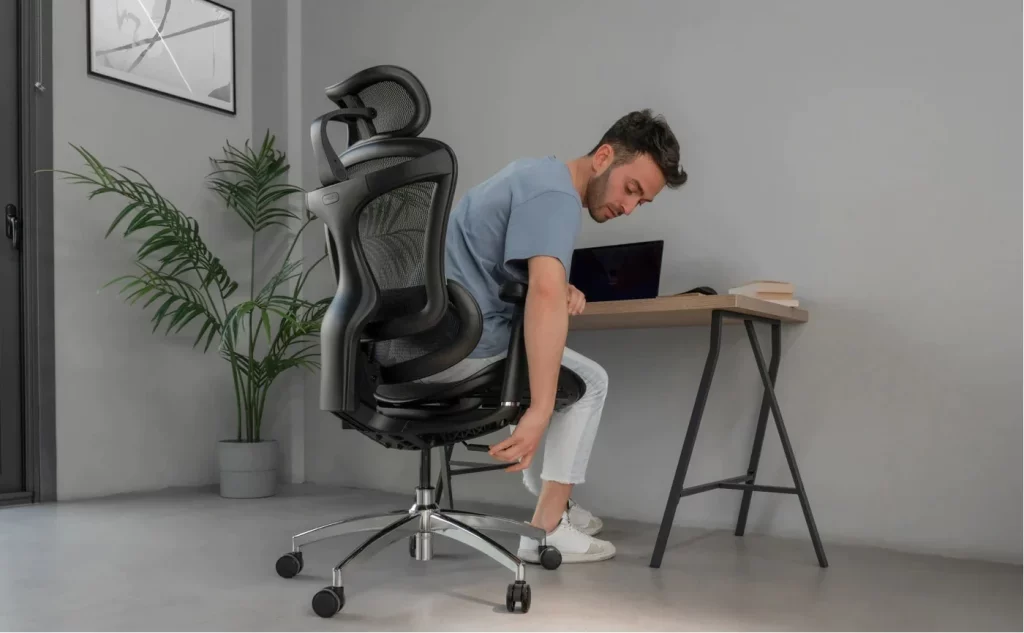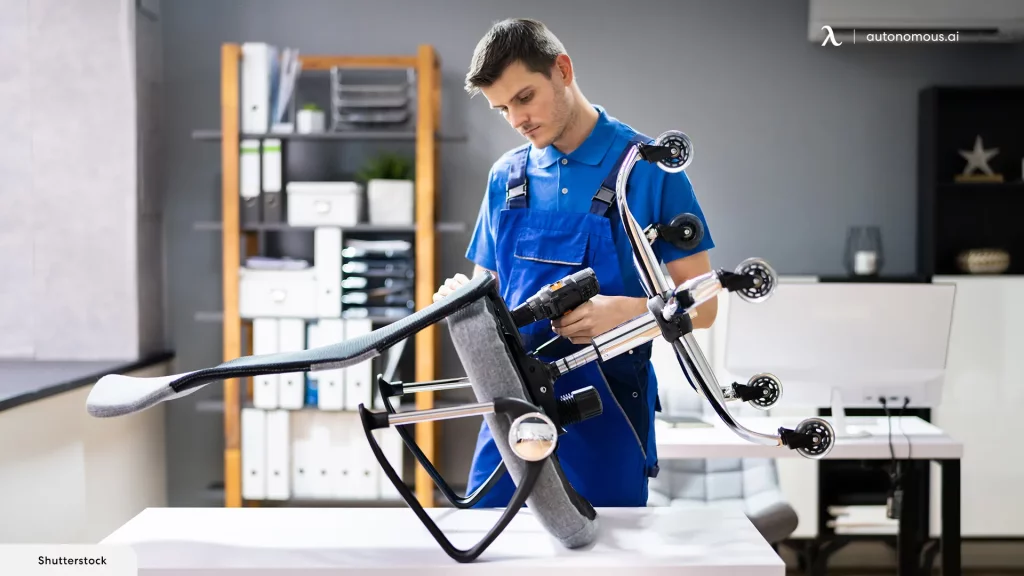In dealing with the frustrating problem of “my office chair keeps sinking,” understanding both the causes and solutions is crucial.
From identifying common causes like the failure of the pneumatic cylinder and adjustment mechanism, to exploring DIY fixes and the importance of regular maintenance, this comprehensive analysis covers various aspects of addressing a sinking office chair.
It emphasizes the significance of knowing when to replace a chair due to wear and tear, understanding the mechanics of a chair’s crucial components, considering professional repair options, and choosing the right chair to prevent future issues.
Common Causes of Office Chair Sinking
There are plenty of reasons that results in the sinking of office chairs. However there are a few common reasons behind this cause, here are few of them
- The most prevalent is the failure of the pneumatic cylinder, which is responsible for maintaining the chair’s height. Over time, the seal inside the cylinder can wear out.
- Another common issue is the malfunction of the adjustment mechanism. As a result, it fails to lock the chair at a desired height.
- Wear and tear of the chair’s components also contributes to sinking. Continuous use puts strain on parts like screws, bolts, and the base. These parts can become weakened or damaged, leading to instability and sinking.
- In some cases, the design of the chair itself can be a factor. Cheaper chairs often use lower quality materials and construction. This can lead to quicker deterioration and more frequent sinking issues.
Addressing these problems usually involves repairing or replacing the faulty component.
Regular maintenance and using the chair within its weight capacity can help prevent sinking.
Understanding the Mechanics of an Office Chair’s Pneumatic Cylinder
Understanding the mechanics of an office chair’s pneumatic cylinder is crucial, especially when dealing with the issue of “my office chair keeps sinking.” The pneumatic cylinder, a key component, is responsible for adjusting the chair’s height.
This cylinder works on the principle of pneumatic pressure. It contains compressed air which helps in lifting the chair when the adjustment lever is activated. A valve inside the cylinder controls the flow of air and maintains the desired chair height.
Over time, the seal within the cylinder can wear out. This leads to a gradual loss of air pressure, which is why the chair starts sinking. Every time you sit down, pressure increases on the worn seal, allowing more air to escape and causing the chair to lower.
When your chair sinks repeatedly, it’s a clear sign that the cylinder’s internal mechanism is failing. While temporary fixes like hose clamps or PVC pipes can stop the sinking, they don’t repair the damaged cylinder.
In such cases, replacing the pneumatic cylinder is often the most effective solution. Understanding this mechanism helps in diagnosing chair problems accurately and deciding whether to repair or replace the component.
How to Fix a Sinking Office Chair

If you’re dealing with the issue office chair sinking there are several ways to fix it.
The most common cause is a faulty pneumatic cylinder. To address this, you can either replace the cylinder or use a temporary fix.
The latter involves wrapping hose clamps or duct tape around the cylinder to hold it at your desired height, though this is more of a makeshift solution.
Another method is using a PVC pipe. Cut a section of the pipe to fit the exposed part of the cylinder when the chair is at your preferred height.
This acts as a sleeve that prevents the chair from sinking.
If the problem lies in the adjustment mechanism, tightening or replacing the mechanism is necessary.
Check for any loose parts or broken components and secure or replace them as needed. Regular maintenance can also prevent future sinking.
This includes checking and tightening screws and bolts periodically, ensuring the chair isn’t overloaded, and keeping the mechanism clean.
For a long-term solution, investing in a high-quality chair or a replacement cylinder is advisable.
Remember, DIY fixes might temporarily solve the issue, but they don’t address the underlying problem.
DIY Repairs for Office Chairs That Won’t Stay Up

Preventive Measures to Avoid Sinking of Office Chairs
Preventative maintenance is crucial to address the common issue of “my office chair keeps sinking.” Regular checks and upkeep can significantly extend the life of your chair and maintain its functionality.
Firstly, routinely inspect the pneumatic cylinder. This is often the primary cause of a sinking chair.
Clean it to remove dust and debris, which can interfere with its operation. Applying a lubricant can also help maintain its smooth functioning.
Tighten all screws and bolts regularly. Loose parts can contribute to the chair’s instability and exacerbate sinking problems.
This simple step can prevent many issues from developing.
Check the adjustment mechanisms frequently. Ensure that levers or knobs are in good working condition and respond correctly.
If they feel loose or unresponsive, tightening or replacing them might be necessary.
Avoid exceeding the chair’s weight capacity. Overloading the chair puts extra strain on all components, especially the pneumatic cylinder, and can lead to premature wear and tear.
If your chair has casters, clean them periodically to ensure smooth movement. Debris stuck in casters can cause additional strain on the chair.
By following these maintenance tips, you can reduce the likelihood of your office chair sinking and extend its lifespan, saving time and resources in the long run.
When to Replace Your Office Chair: Signs of Wear and Tear

Knowing when to replace your office chair is key, especially when faced with the recurring issue of “my office chair keeps sinking.” While maintenance can extend a chair’s life, there are clear signs when replacement becomes necessary.
- The most obvious sign is persistent sinking. If your chair continues to sink despite attempts at repair or maintenance, it’s a strong indication the pneumatic cylinder or the adjustment mechanism is beyond fixing.
- Noticeable physical wear and tear is another sign. This includes frayed fabric, significant cushion flattening, or visible damage to the chair’s structure. These issues not only affect comfort but can also impact posture and productivity.
- Listen for unusual noises. Squeaks, creaks, or grinding sounds during use suggest internal components are worn out or damaged.
- If the chair no longer provides adequate support, resulting in discomfort or back pain, it’s time for a replacement. Ergonomics play a crucial role in maintaining health and productivity.
- Lastly, consider the chair’s age. Even with excellent care, most office chairs are designed to last around 7 to 10 years. Beyond this, they may start to deteriorate regardless of maintenance efforts.
When you continuously battle with a sinking chair and other signs of wear, investing in a new office chair is a wise decision for long-term comfort and efficiency.
Professional Services for Office Chair Repair
When facing the persistent problem of “my office chair keeps sinking,” seeking professional services for office chair repair can be a wise decision.
These services specialize in diagnosing and fixing common issues like a malfunctioning pneumatic cylinder, which is often the root cause of a sinking chair.
Professionals in office chair repair possess the expertise to accurately assess the problem.
They can determine whether the pneumatic cylinder needs replacing or if there are other underlying issues like a faulty adjustment mechanism or worn-out components.
These services can offer more sustainable and reliable solutions compared to DIY repairs.
They have access to quality replacement parts and the necessary tools to ensure repairs are done correctly. This can extend the life of your chair and prevent future issues.
Additionally, professional repair services can provide maintenance advice and suggest ergonomic adjustments to enhance the chair’s functionality and comfort.
While seeking professional help might seem like an additional expense, it can be cost-effective in the long run.
It saves you from the cycle of temporary fixes and ensures that your chair remains functional and supportive, contributing to a more productive workspace.
Choosing the Right Office Chair to Avoid Sinking Issues
Choosing the right office chair is crucial to avoid the common problem of “my office chair keeps sinking.” When selecting a chair, consider the following factors to ensure longevity and avoid sinking issues:
- Quality of Pneumatic Cylinder: Opt for chairs with high-quality pneumatic cylinders. These are less likely to fail and cause sinking. Research the brand and model to ensure they have a good track record for durability.
- Weight Capacity: Ensure the chair supports your weight. Exceeding the recommended weight capacity can strain the pneumatic cylinder, leading to sinking.
- Warranty and Brand Reputation: Look for chairs with extended warranties and positive reviews. Brands with good reputations are more likely to use durable materials that withstand regular use.
- Adjustment Mechanisms: Check the quality of the adjustment levers and knobs. They should feel sturdy and operate smoothly.
- Construction and Materials: Durable materials and solid construction are indicators of a chair that will last. Avoid chairs that feel flimsy or have a lot of plastic components.
By paying attention to these aspects, you can select a chair that not only suits your ergonomic needs but also minimizes the risk of sinking, ensuring a more reliable and comfortable seating experience in your office.
Safety Tips When Repairing a Sinking Office Chair
When addressing the issue of “my office chair keeps sinking,” safety during repairs is paramount. Here are key tips to ensure your safety:
- Turn Off Pneumatic Lever: Before starting, ensure the pneumatic lever is disengaged to avoid unexpected movements.
- Stable Surface: Work on a stable, flat surface. This prevents the chair from moving unexpectedly.
- Proper Tools: Use the correct tools for the job. Incorrect tools can cause injuries or further damage to the chair.
- Wear Protective Gear: Safety glasses are advisable to protect your eyes from potential debris, especially when working with metal parts.
- Follow Instructions: If you’re using a repair kit or replacing parts, follow the manufacturer’s instructions closely. Improper installation can lead to accidents.
- Avoid Overstraining: Don’t force parts to fit. If a component isn’t fitting easily, reevaluate your approach.
- Check for Stability: After repair, gently test the chair for stability before fully sitting on it.
- Know Your Limits: If the repair seems beyond your skill level, it’s safer to seek professional help. Incorrect repairs can lead to chair failure and potential injury.
Remember, while fixing a sinking chair is important, your safety is paramount. Taking the right precautions can prevent accidents and ensure a successful repair.
Conclusion
In conclusion, resolving the issue of a sinking office chair requires a combination of knowledge, practical skills, and safety awareness.
Whether it’s through DIY repairs, regular maintenance, or professional intervention, the key is to recognize the signs of malfunction early and take appropriate action.
Safety should always be a priority when attempting any repairs.
Ultimately, understanding the intricacies of your office chair not only ensures a more stable and comfortable workspace but also contributes to better posture and efficiency in the long run.

